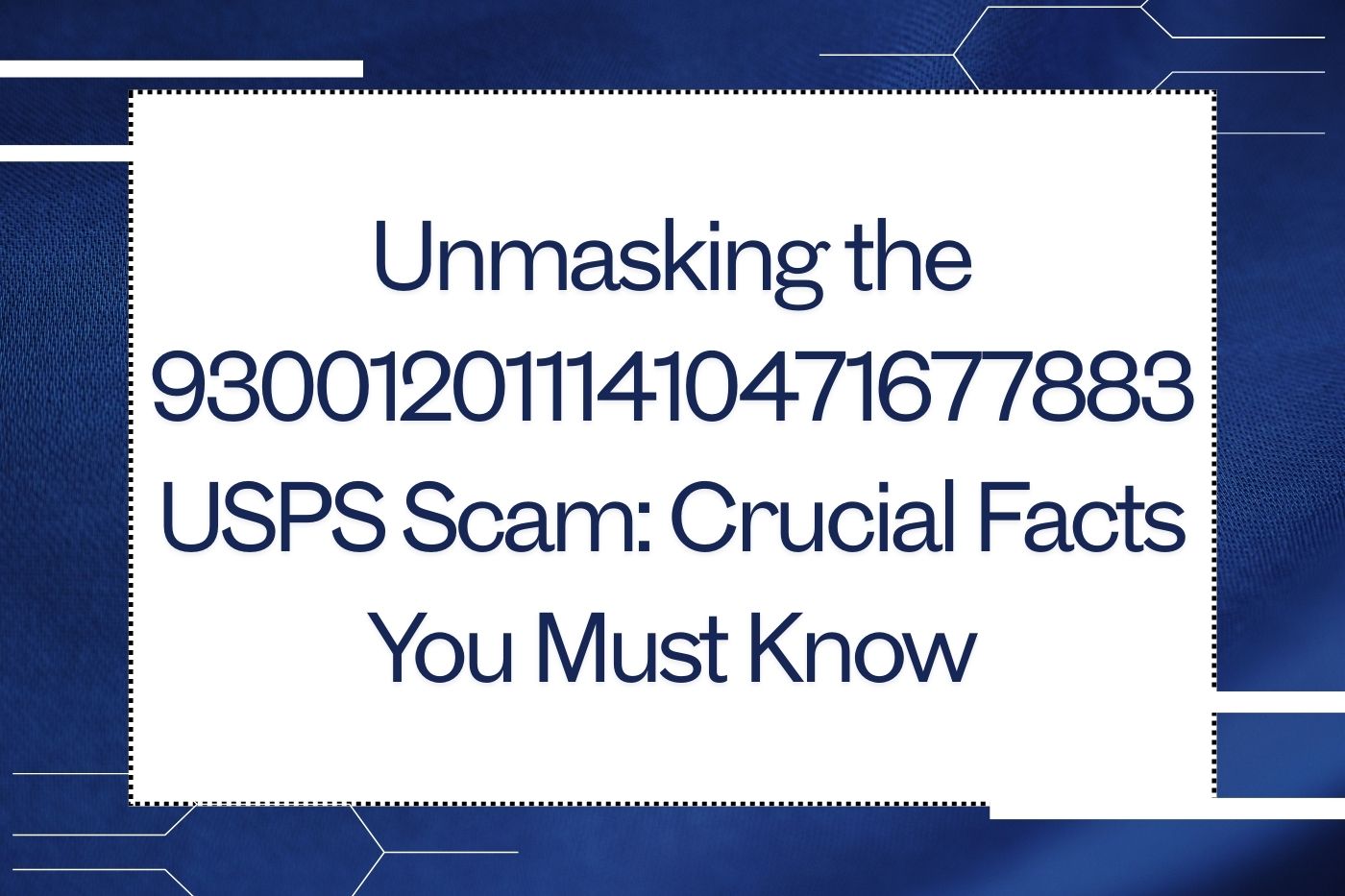The 9300120111410471677883 USPS Scam is a sophisticated fraud scheme that has been targeting unsuspecting victims across the United States. This scam leverages the trusted reputation of the United States Postal Service (USPS) to lure people into providing their personal and financial information. In this article, we will delve deep into the workings of this scam, uncover the tactics used by the perpetrators, and equip you with the knowledge to protect yourself from becoming a victim.
The 9300120111410471677883 USPS Scam is a complex web of deception that has been causing significant harm to individuals and communities nationwide. By understanding the inner workings of this scam, we can better equip ourselves to recognize the warning signs and protect our personal and financial information from falling into the wrong hands.
In this comprehensive article, we will delve into the details of the 9300120111410471677883 USPS Scam, unraveling the psychological tactics employed by the perpetrators, the nationwide impact, and the steps you can take to safeguard yourself and your loved ones from falling victim to this insidious scheme.
How the 9300120111410471677883 Scam Begins
The scam typically starts with a notification that appears to be from the USPS, alerting the recipient about a package delivery. This notification may come in the form of an email, text message, or even a phone call.
The message will often include the tracking number 9300120111410471677883 and instruct the recipient to click on a link or provide additional information to track the package.
The message will often create a sense of urgency, urging the recipient to click on a link or provide additional information to track the supposed package delivery. This is where the trap is set, as the link leads to a convincing but fake USPS website designed to steal personal data.
The Psychological Tactics Behind the 9300120111410471677883 Scam
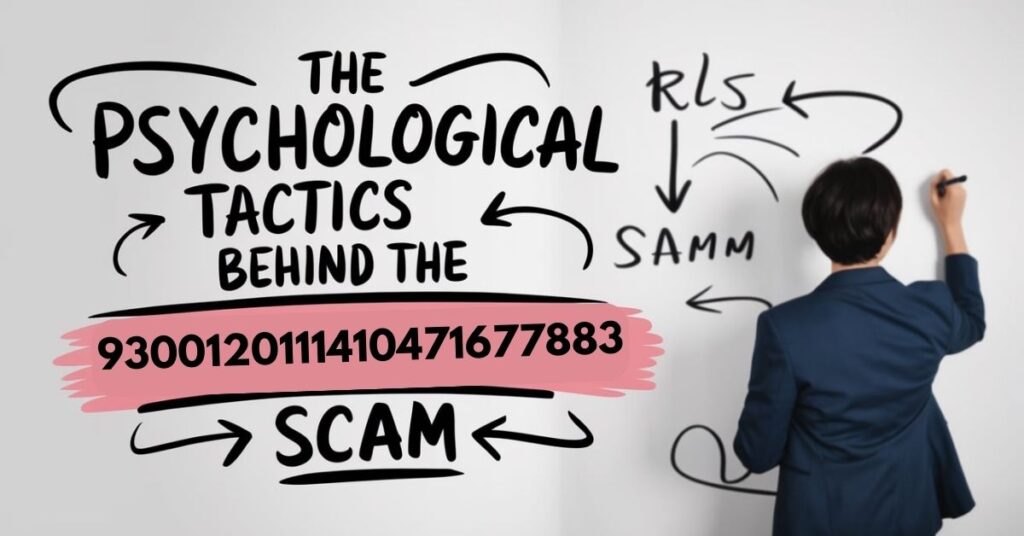
The 9300120111410471677883 USPS Scam is carefully crafted to exploit the psychology of the victims. The scammers use a combination of fear, urgency, and trust to manipulate their targets into providing sensitive information or taking actions that ultimately benefit the perpetrators.
One of the key tactics employed is the use of a specific tracking number, in this case, 9300120111410471677883. This number is often presented as a legitimate USPS tracking number, lending an air of authenticity to the scam.
The victims, eager to ensure the safe delivery of their packages, are more likely to follow the instructions provided, potentially leading them down a dangerous path.
Why the 9300120111410471677883 Scam Is So Convincing
The 9300120111410471677883 USPS Scam is particularly convincing for several reasons:
- Imitation of USPS Branding: The scammers go to great lengths to mimic the visual identity and branding of the USPS, including the use of official-looking logos, fonts, and color schemes.
- Credible Tracking Numbers: The inclusion of a seemingly valid tracking number, such as 9300120111410471677883, adds an air of legitimacy to the scam.
- Sense of Urgency: The notifications often create a sense of urgency, suggesting that immediate action is required to avoid missing a package delivery.
- Personalization: The scammers may personalize the messages with the recipient’s name or other details, making the scam appear more targeted and authentic.
The Nationwide Impact of the 9300120111410471677883 Scam
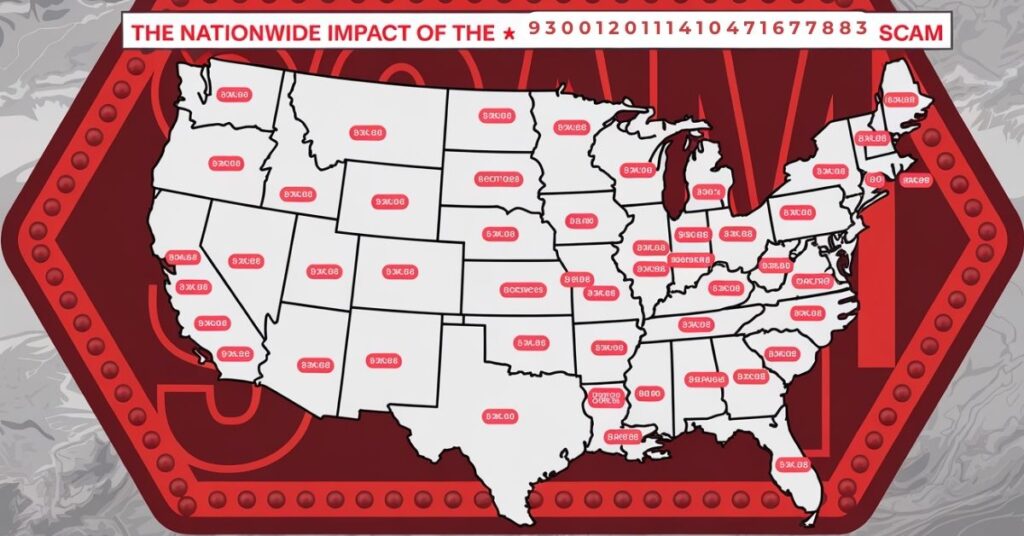
The 9300120111410471677883 USPS Scam has had a significant impact on individuals and communities across the United States. Thousands of unsuspecting victims have fallen prey to this elaborate scheme, resulting in widespread financial losses, identity theft, and the dissemination of sensitive personal information.
The scam’s reach extends beyond just monetary damages, as the emotional toll on victims can be equally devastating. The sense of violation and the fear of further exploitation can have lasting effects on the mental health and well-being of those affected.
The 9300120111410471677883 USPS Scam can have broader societal implications, eroding trust in the postal service and undermining the confidence in the overall security of package deliveries. This, in turn, can lead to a heightened sense of anxiety and uncertainty among consumers, and a growing reluctance to engage in online shopping and other delivery-dependent services.
The Role of the Fake Tracking Number 9300120111410471677883
The 9300120111410471677883 tracking number is the linchpin of this scam. Scammers use this specific number to lend an air of legitimacy to their fraudulent communications, leveraging the public’s familiarity with USPS tracking systems.
By providing a seemingly valid tracking number, the scammers create a sense of urgency and the impression that a real package is in transit, making the victim more likely to take the bait and follow the instructions provided.
The 9300120111410471677883 tracking number is entirely fabricated and has no connection to any legitimate USPS delivery. It is a carefully crafted tool used to manipulate and deceive unsuspecting individuals.
The Fake USPS Website: A Well-Designed Trap
The 9300120111410471677883 USPS Scam often involves the use of a fake USPS website that is designed to mimic the official USPS platform. These websites are typically hosted on domains that closely resemble the legitimate USPS website, making it challenging for the average user to distinguish between the real and the counterfeit.
Once victims are directed to these fraudulent websites, they are presented with a series of prompts and instructions that appear to be from the USPS. These may include requests for personal information, such as names, addresses, and financial details, all under the guise of resolving a supposed delivery issue.
By creating a convincing online presence, the scammers aim to exploit the trust and familiarity that consumers have with the USPS brand, ultimately leading them to unwittingly provide sensitive information that can be used for nefarious purposes.
The Information Requested by the Scam
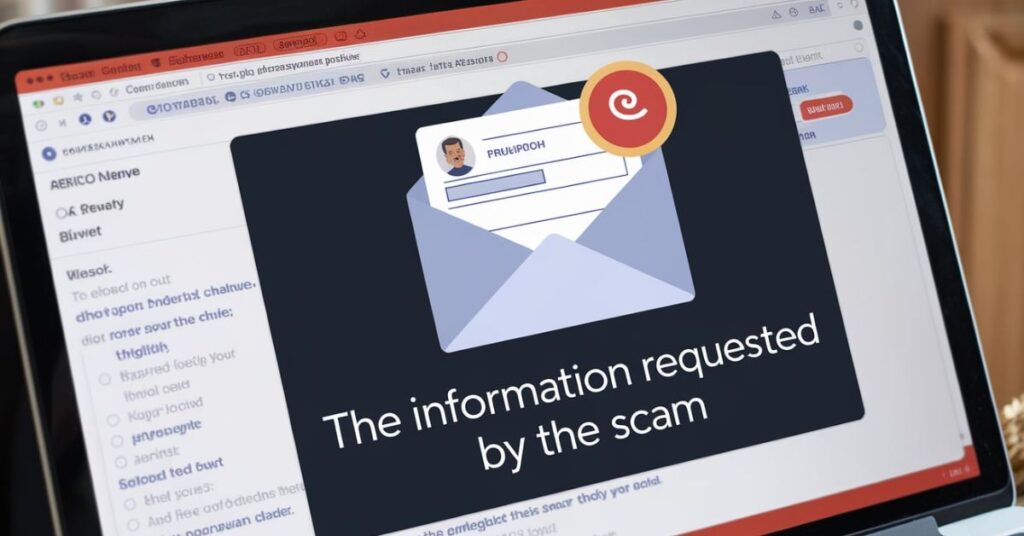
When victims click on the link and are directed to the fake USPS website, they are typically asked to provide a range of personal information. This information is then exploited by the scammers for various malicious purposes.
The scammers may request the victim’s name, address, phone number, and even financial details like credit card numbers or banking information. By collecting this sensitive data, the scammers can engage in identity theft, financial fraud, and other criminal activities.
It is crucial to never provide any personal or financial information in response to unsolicited requests, even if they appear to be from a legitimate organization like the USPS. Doing so puts you at risk of becoming a victim of the 9300120111410471677883 USPS Scam and suffering the consequences of data theft and exploitation.
Read this article: Power Up Your ASUS Experience with Fashion 6 Cell 10.8V 4001mAh-5000mAh Replacement Laptop Battery for ASUS
How the 9300120111410471677884 USPS Scam Works
The 9300120111410471677884 USPS Scam follows a similar pattern to the 9300120111410471677883 USPS Scam, with a few key differences:
- Crafting Fraudulent Notifications: The scammers create fake notifications that appear to be from the USPS, often using the same tactics as the 9300120111410471677883 USPS Scam.
- Including Fake Tracking Numbers: Instead of using the 9300120111410471677883 tracking number, the scammers may use a different fabricated number, such as 9300120111410471677884.
- Directing to Highly Convincing Phishing Sites: The link in the notification leads to a phishing website that is designed to mimic the USPS website, with the goal of stealing the victim’s personal and financial information.
- Stealing and Exploiting User Data: The scammers collect the victim’s sensitive information, which they then use for identity theft, financial fraud, and other malicious activities.
- Spreading Malware: In some cases, the phishing website may also be used to deliver malware to the victim’s device, further compromising their security.
- Perpetuating Additional Scams: The stolen information may be used to carry out additional scams or sell it to other cybercriminals on the dark web.
Is 9300120111410471677884 a Fake USPS Tracking Number?
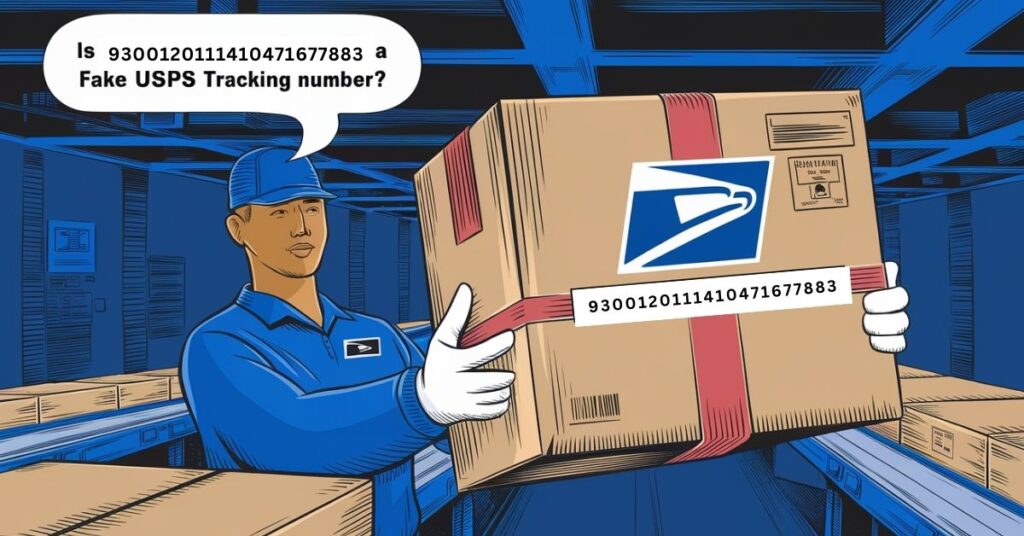
Yes, 9300120111410471677884 is a fake USPS tracking number that is being used in a similar scam to the 9300120111410471677883 USPS Scam. These tracking numbers are fabricated by the scammers and do not correspond to any legitimate USPS package delivery.
The scammers responsible for these types of scams fabricate tracking numbers that appear to be legitimate USPS codes. However, these numbers do not correspond to any actual package deliveries. They are designed solely to lure victims into the scam by creating a false sense of urgency and credibility.
When a recipient receives a notification about a package with the 9300120111410471677884 tracking number, it is a clear indication of a fraudulent scheme. These tracking numbers are completely made up and have no connection to the United States Postal Service. Victims who attempt to track the package using this number will find that it does not exist in the USPS system, further confirming the scam.
Typical Scam Format
The 9300120111410471677883 USPS Scam and its variants typically follow a similar format:
- Fraudulent notification (email, text message, or phone call) claiming a package has been sent with a specific tracking number.
- Urgent call to action, such as clicking a link or providing personal information to track the package.
- Redirection to a fake USPS website designed to steal the victim’s data.
- Exploitation of the victim’s personal and financial information for various malicious purposes.
Warning Signs of a Fake Tracking Number
Some key signs that a tracking number, such as 9300120111410471677883 or 9300120111410471677884, is fake include:
- The number does not match the standard USPS tracking number format.
- The number is not found in the USPS tracking system when entered.
- The notification or website appears to be suspicious or unprofessional.
- The request for personal information seems excessive or unwarranted.
Identifying the Signs of the 9300120111410471677883 Scam
To identify the 9300120111410471677883 USPS Scam, look for the following warning signs:
- Unsolicited notifications about a package delivery with a specific tracking number.
- Requests to click on a link or provide personal information to track the package.
- Websites that appear to be USPS-related but have inconsistencies or look unprofessional.
- Sense of urgency or threat of consequences for not responding.
Protecting Yourself from the Scam
To protect yourself from the 9300120111410471677883 USPS Scam and its variants, follow these steps:
- Verify the Notification: Contact the USPS directly to confirm the validity of any package delivery notification before taking any action.
- Don’t Click on Links: Refrain from clicking on links in suspicious emails, text messages, or notifications. Instead, visit the USPS website directly.
- Avoid Providing Personal Information: Never provide your personal or financial information in response to unsolicited requests, even if they appear to be from the USPS.
- Keep Software Up-to-Date: Ensure your devices and security software are up-to-date to protect against malware that may be associated with these scams.
What to Do If You’ve Fallen Victim to the Scam
If you have already provided your personal or financial information to the scammers, take the following actions immediately:
- Contact Your Financial Institutions: Notify your bank, credit card companies, and other relevant financial institutions about the potential fraud.
- Monitor Your Accounts: Closely monitor your financial accounts and credit reports for any suspicious activity.
- Report the Scam: File a complaint with the USPS Inspection Service, the Federal Trade Commission (FTC), and your local law enforcement agency.
- Protect Your Identity: Consider placing a credit freeze on your credit report and monitoring your identity for any signs of theft.
Reporting the 9300120111410471677883 Scam
If you have encountered the 9300120111410471677883 USPS Scam or any similar scam, it is important to report it to the relevant authorities. This helps to raise awareness, prevent others from falling victim, and support law enforcement efforts to disrupt these criminal activities. You can report the scam to the following:
- USPS Inspection Service: File a complaint with the USPS Inspection Service, which is the law enforcement arm of the Postal Service.
- Federal Trade Commission (FTC): Report the scam to the FTC, which collects consumer complaints and uses the information to investigate fraud.
- Local Law Enforcement: Contact your local police department or sheriff’s office to report the scam.
Educating Others About the Scam
Sharing information about the 9300120111410471677883 USPS Scam and other similar scams is crucial to protecting the wider community. You can help educate others by:
- Sharing this Article: Distribute this article or share the key information with friends, family, and online communities.
- Raising Awareness: Encourage others to be vigilant about suspicious package delivery notifications and to verify the legitimacy of any requests for personal information.
- Promoting Cybersecurity Education: Support initiatives that educate the public about online safety and how to recognize and avoid scams.
The Future of Scams Like 9300120111410471677883
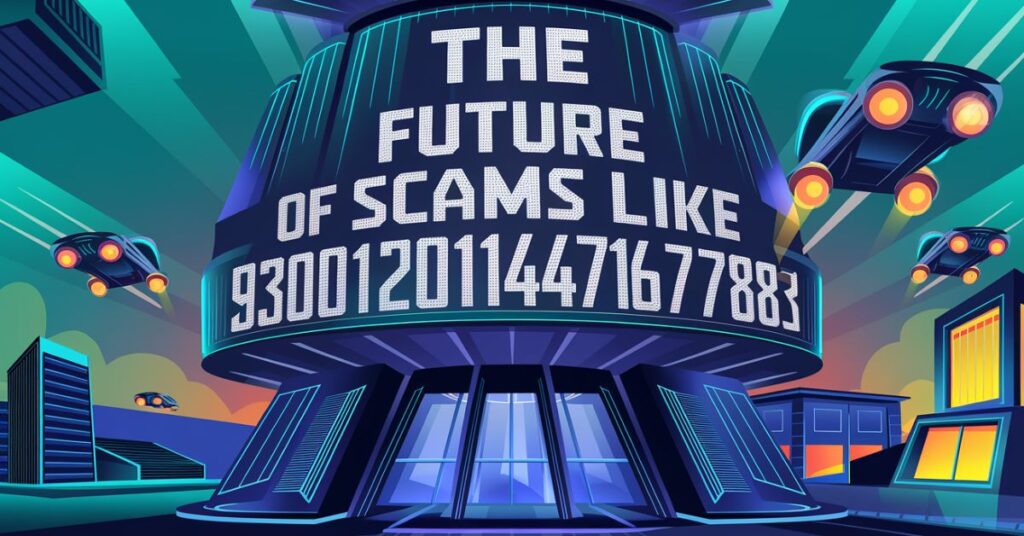
As technology evolves, scams like the 9300120111410471677883 USPS Scam will likely become more sophisticated. Cybercriminals adapt their tactics to stay ahead of security measures and exploit new vulnerabilities.
One concerning trend is the increasing use of AI and machine learning in scams. Scammers may leverage these tools to generate more convincing fake notifications, create realistic-looking websites, and personalize their approaches. This could make it harder for people to distinguish genuine from fraudulent communications.
The rise of new technologies, like blockchain and the IoT, may also introduce new avenues for scammers to exploit. As these technologies spread, criminals may find ways to integrate them into their scams, making it even harder to detect and prevent these threats. Staying ahead will require collaboration between individuals, businesses, and agencies to develop robust security measures.
Taking Control of Your Online Security
Protecting yourself from scams like the 9300120111410471677883 USPS Scam requires a multifaceted approach to online security. This includes:
- Keeping Software Up-to-Date: Ensure your devices, operating systems, and security software are always up-to-date to address the latest vulnerabilities.
- Using Strong Passwords: Create unique, complex passwords for all your online accounts and consider using a password manager.
- Enabling Two-Factor Authentication: Activate two-factor authentication whenever possible to add an extra layer of security to your accounts.
- Practicing Safe Browsing: Be cautious when clicking on links or providing information online, and only visit trusted websites directly.
- Monitoring Financial Accounts: Regularly review your financial statements and credit reports for any suspicious activity.
The Role of Technology in Fighting Scams
Technology companies, government agencies, and cybersecurity experts are continuously working to develop new tools and strategies to combat scams like the 9300120111410471677883 USPS Scam. Some of the ways technology is being used to fight these threats include:
- Improved Fraud Detection: Advanced algorithms and machine learning are being used to identify and block fraudulent activities in real-time.
- Enhanced Threat Intelligence: Sharing of information and collaboration between organizations helps to quickly identify and respond to emerging scams.
- Cybersecurity Education: Online resources and educational programs are being created to teach the public about digital safety and how to recognize scams.
By staying informed, vigilant, and proactive, we can all play a role in protecting ourselves and our communities from the devastating impact of scams like the 9300120111410471677883 USPS Scam.
Final Thought
The 9300120111410471677883 USPS Scam is a sophisticated fraud scheme that exploits the trust in the USPS brand. By understanding the tactics used by the perpetrators, you can better protect yourself and your loved ones from falling victim to this scam.
Staying vigilant, verifying the legitimacy of any package delivery notifications, and avoiding the provision of personal information in response to unsolicited requests are crucial steps to safeguard against this and similar scams. Reporting any incidents to the proper authorities can also help disrupt these criminal activities and prevent others from experiencing the same fate.
As technology continues to evolve, the threat of scams like the 9300120111410471677883 USPS Scam will persist. By maintaining a proactive approach to online security and educating ourselves and our communities, we can work together to create a safer digital landscape for all.
Frequently Asked Questions
What is the 9300120111410471677883 USPS Scam?
The 9300120111410471677883 USPS Scam is a fraudulent scheme using the USPS name to steal personal information.
How does the 9300120111410471677883 USPS Scam work?
The scam involves a fake package delivery notification with a tracking number that directs victims to a fraudulent USPS website.
Is 9300120111410471677884 a real USPS tracking number?
No, 9300120111410471677884 is a fake USPS tracking number used in a similar scam.
How can I protect myself from the 9300120111410471677883 USPS Scam?
Verify package notifications, avoid clicking links, and keep software updated to protect against the scam.
What should I do if I’ve fallen victim to the 9300120111410471677883 USPS Scam?
If victimized, contact financial institutions, monitor accounts, and report the scam to authorities.

Ayekiz is a skilled technology author on TechsBlip, committed to providing informative and engaging content that simplifies complex tech concepts. With a passion for promoting digital literacy and online safety, Ayekiz’s writing offers expert analysis, practical tips, and evidence-based information to empower readers in the digital age.

